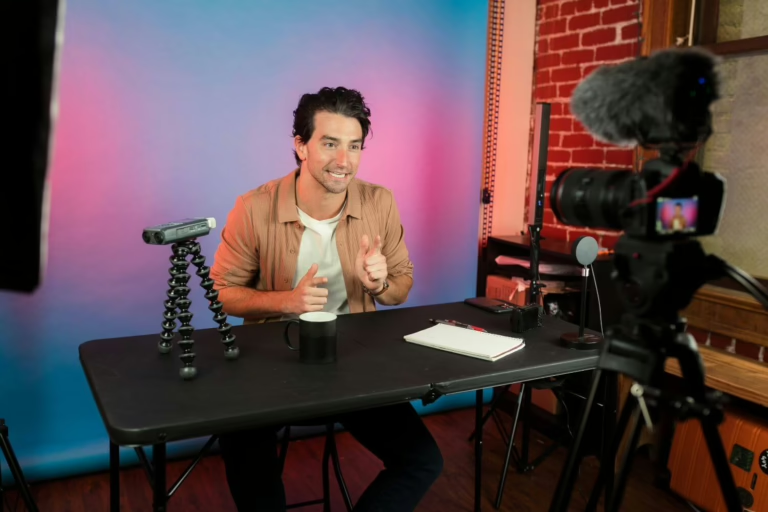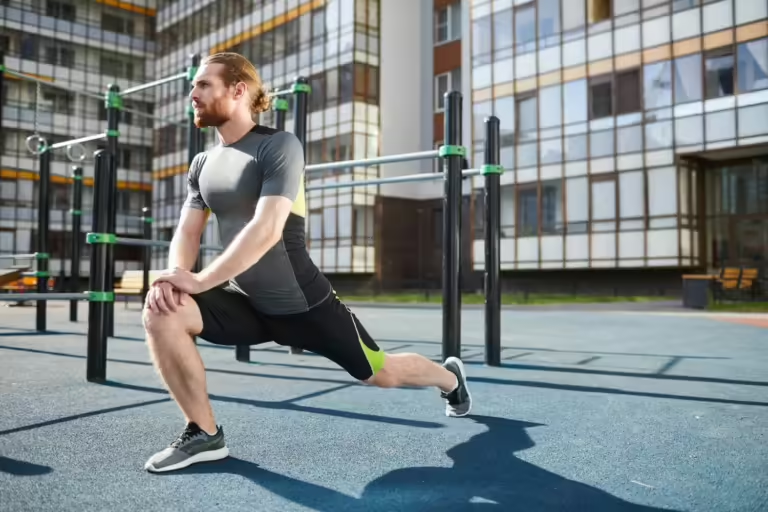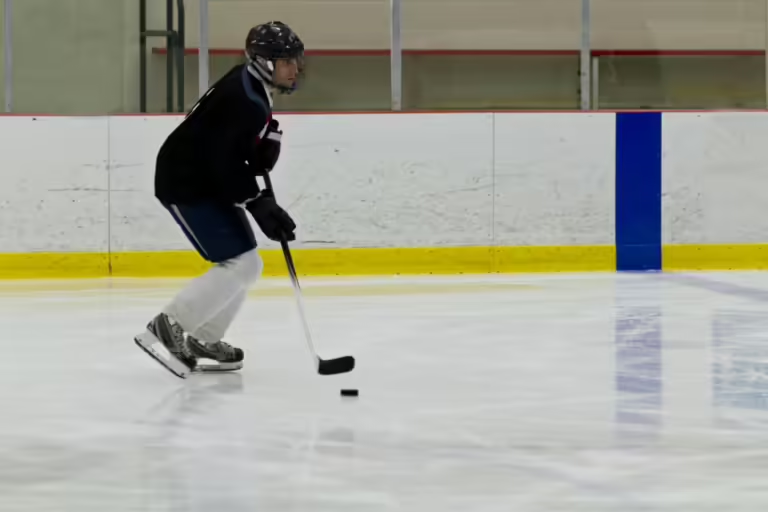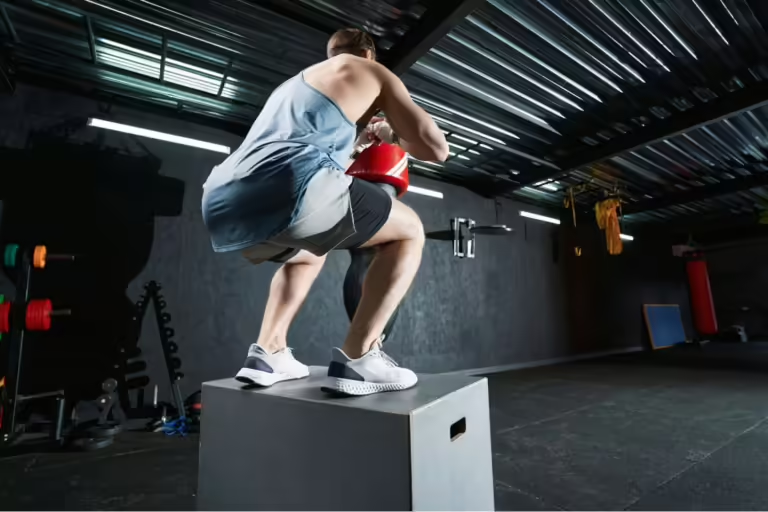At the beginning of every game, you’re probably able to skate your entire shift at maximum effort. However as the game progresses, you may start to lose puck battles and not skate as hard throughout the entire shift.
With these three treadmill workouts, that won’t happen anymore.
In this article we’ll go over why fatigue sets in and how to delay it with specific treadmill workouts that will ensure you have the stamina to skate hard the entire game.
The Science Of Whole Game Stamina
There are two types of endurance – aerobic and anaerobic.
Anaerobic endurance
Anaerobic endurance determines how well you perform at short bursts of max effort of up to about 1-2 minutes. Can you make it through a full 45-second hockey shift at max effort? That will be determined by your anaerobic capacity.
Aerobic endurance
Aerobic endurance determines how well you can perform over a longer period of time, such as a full game of hockey. Your aerobic capacity will determine how quickly you recover in between shifts as well as how hard you can continue to skate deep into the third period.
Therefore, in order to skate hard from your first shift through your last shift, you must ensure your aerobic conditioning is up for the challenge. One of the best ways to measure your aerobic fitness is by measuring your VO2 max.
What Is VO2 Max?
VO2 max is one of the best measures of aerobic fitness. It measures the maximum amount of oxygen your body can use during intense exercise and is a good indicator of how efficient your cardiovascular and respiratory systems are at delivering oxygen to your muscles. The more oxygen your muscles get, the longer you can sustain activity.
It’s not necessarily easy to track your VO2 max. Typically you’ll have to go into a doctors office for a lab test, but some gyms are starting to carry VO2 max testing equipment as well. A few wearable devices are also starting to estimate VO2 max, although their accuracy is questionable.
However, thanks to numerous scientific studies, we know for certain that some specific workouts do improve VO2 max relatively quickly. By adding those workouts into your routine, you’ll be well on your way to improving your whole game stamina.
Disclosure – Check With Your Doctor First!
Interval treadmill workouts are grueling. Before proceeding, you should check with your doctor first to ensure your body can handle this sort of strenuous exercise. If you feel lightheaded at all during the workout, stop immediately and seek help. Always go into these workouts fully hydrated and have more water closeby to continue to hydrate. Finally, always cool down properly to prevent a sudden drop in blood pressure. None of this is medical advice.
Treadmill Workout #1: Long Interval (4m on, 2m off)
Longer intervals allow you to truly push your aerobic capacity to near maximal oxygen uptake. Although this format is much different than a hockey game because no shift will last four minutes, this format has the strongest scientific evidence of improving your VO2 max. By doing this workout, you’ll certainly feel an improvement in your endurance on the ice.
Sample Long Interval Treadmill Workout:
- Warmup and dynamic stretch first if starting cold
- Set the incline to 3%
- Run for four minutes at a pace where you’re winded for the last minute
- Slow down to a very slow walk and rest for two minutes
- Repeat for four total sets
- Cool down by slowing down to a walk and reducing the speed every 30 seconds until your heart rate recovers
Treadmill Workout #2: Short Interval HIIT (1m on, 1m off)
Short intervals allow you to run a bit faster, very similar to a true sprint. This also very much mimics a full hockey shift, which is ideal when it comes to hockey-specific endurance training.
Sample Short Interval Treadmill Workout:
- Warmup and dynamic stretch first if starting cold
- Set the incline to 3%
- Run for 60 seconds at a pace that feels like 80-90% of your max effort
- Slow down to a very slow walk and rest for 60 seconds
- Repeat for six total sets
- Cool down by slowing down to a walk and reducing the speed every 30 seconds until your heart rate recovers
Treadmill Workout #3: Tempo Runs (20m steady state at 80-85% effort)
A tempo run is simply a steady state jog for 20-45 minutes. These are less intense than interval runs, however the length of workout is certainly a challenge.
Sample Tempo Run Treadmill Workout:
- Warmup and dynamic stretch first if starting cold
- Set the incline to 3%
- Set the speed to about 60-70% of your max effort
- Run for 20-45 minutes
- Cool down by slowing down to a walk and reducing the speed every 30 seconds until your heart rate recovers
How To Schedule These Treadmill Workouts Into Your Week
You should aim for 3-4 cardio sessions per week. A hockey game would count as a cardio session, so for each game you play per week you’d reduce your target number of workouts by one.
So for example, if you play hockey once per week, you should aim for 2-3 treadmill interval sessions per week. If you play hockey twice per week, you should aim for 1-2 treadmill sessions per week. You’ll want to split your workouts between interval sessions and tempo runs to ensure you’re building a strong base of cardiovascular endurance with different types of workouts. For example, if you are aiming for two treadmill sessions per week, maybe you do one long interval session and one tempo run.
These sessions can be done as standalone workouts, or they can be added to the end of a weightlifting session.
It’s very important to avoid overtraining, as overtraining can both halt any cardiovascular progress as well as hinder your on-ice performance.
How To Warm Up & Cooldown
You should always warm up prior to running on the treadmill. At the very minimum, it’s a good idea to walk at a moderate pace and a slight incline for 3-5 minutes to warm the body up. Many people also add these treadmill running workouts to the end of their weightlifting sessions, in which case they’re already more-or-less warmed up and ready to go. Doing some dynamic stretches prior to running is also a great addition to a running warm up routine.
After your running session is over, you don’t want to immediately turn the treadmill off. Instead, go back down to a moderate walking pace and slowly reduce the speed every 30-60 seconds until your heart rate and breathing has recovered.
Sample Cooldown:
- Reduce speed to 3 mph and walk for 60 second
- Reduce speed to 2.8 mph and walk for 60 seconds
- Reduce speed to 2.6 mpg and walk for 60 seconds
- Exit the treadmill and perform some static stretching of the hamstrings and hips
What Equipment Do You Need?
The beautiful thing about treadmill workouts is that all you really need is the treadmill. And if you’re still working up your endurance and don’t feel ready to run on the treadmill, you can run outside for free.
Aside from a treadmill, if you wanted to really up your training, you could invest in a solid pair of running shoes and running insoles. For hockey players just getting into running, the New Balance 880s are an absolutely fantastic entry-level running shoe.
How Long Will It Take To See Results?
If you’re new to cardiovascular training, you’ll certainly see results within 2 weeks as long as you’re training 2-3 times per week. If you’re already an intermediate when it comes to cardiovascular fitness, it may take 3-4 weeks to see results.
However, nearly everyone will benefit from these workouts being performed 2-3 times per week and will see steady results over a three month period before progress starts to plateau. Everyone’s on-ice performance will benefit from these workouts.
Follow These Tips And Watch Your Whole Game Stamina Explode!
One of the most straightforward ways to improve your on-ice performance is to improve your VO2 max. By adding these treadmill workouts to your weekly fitness routine, you’ll be sure to see improvements on the ice within weeks. Say hello to more points and say goodbye to fatigue.





